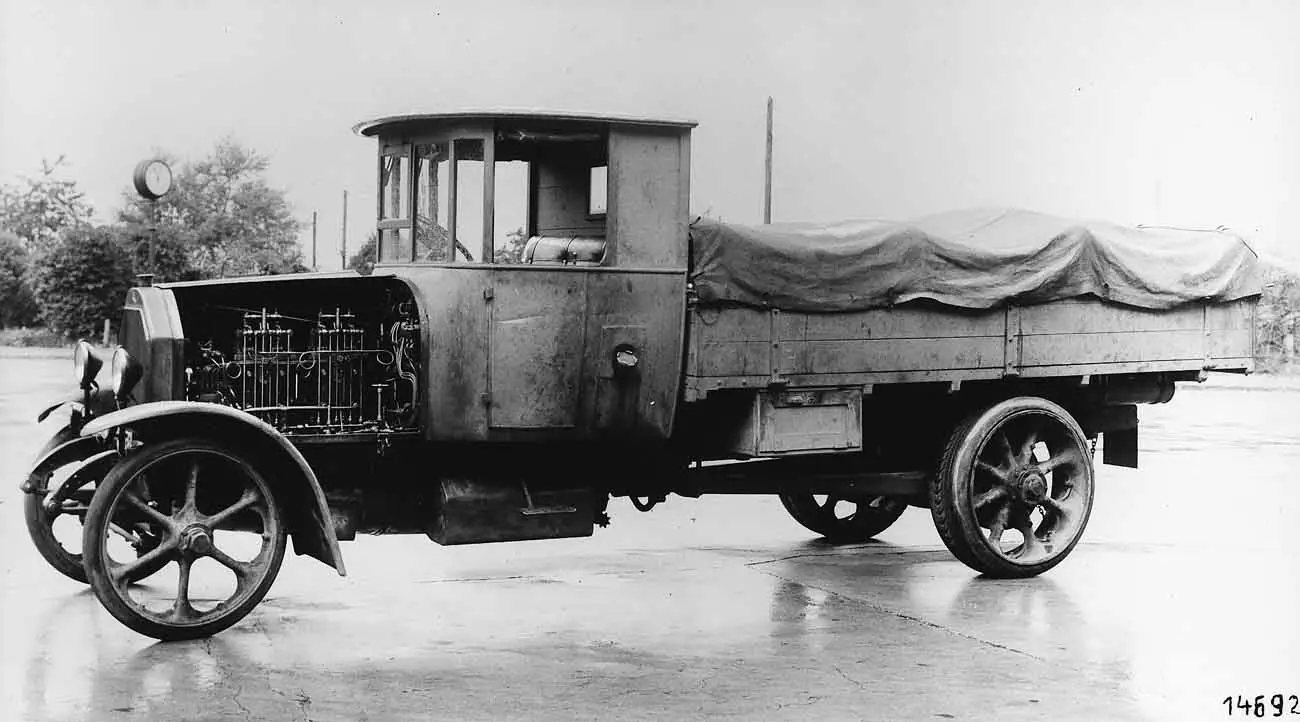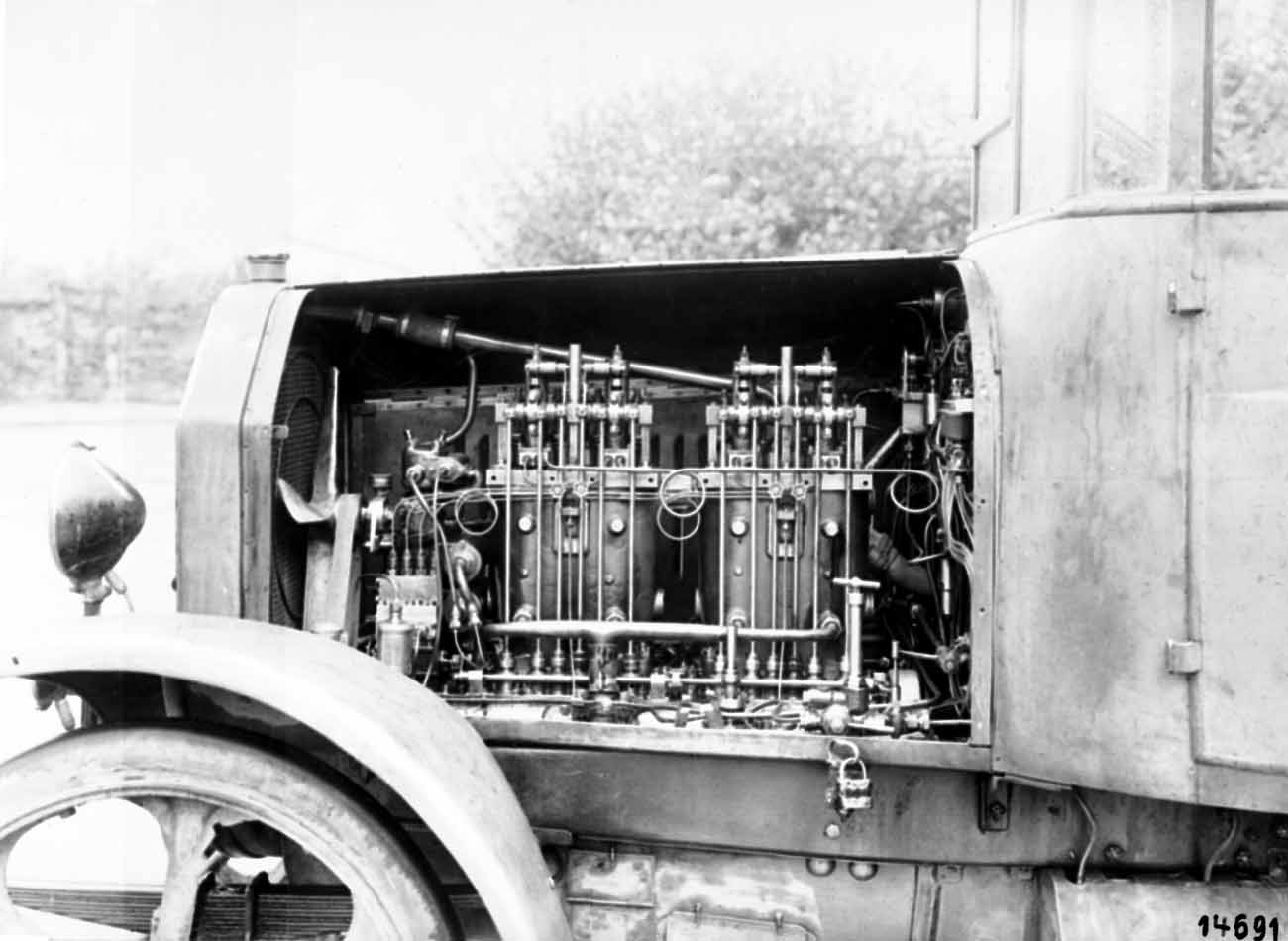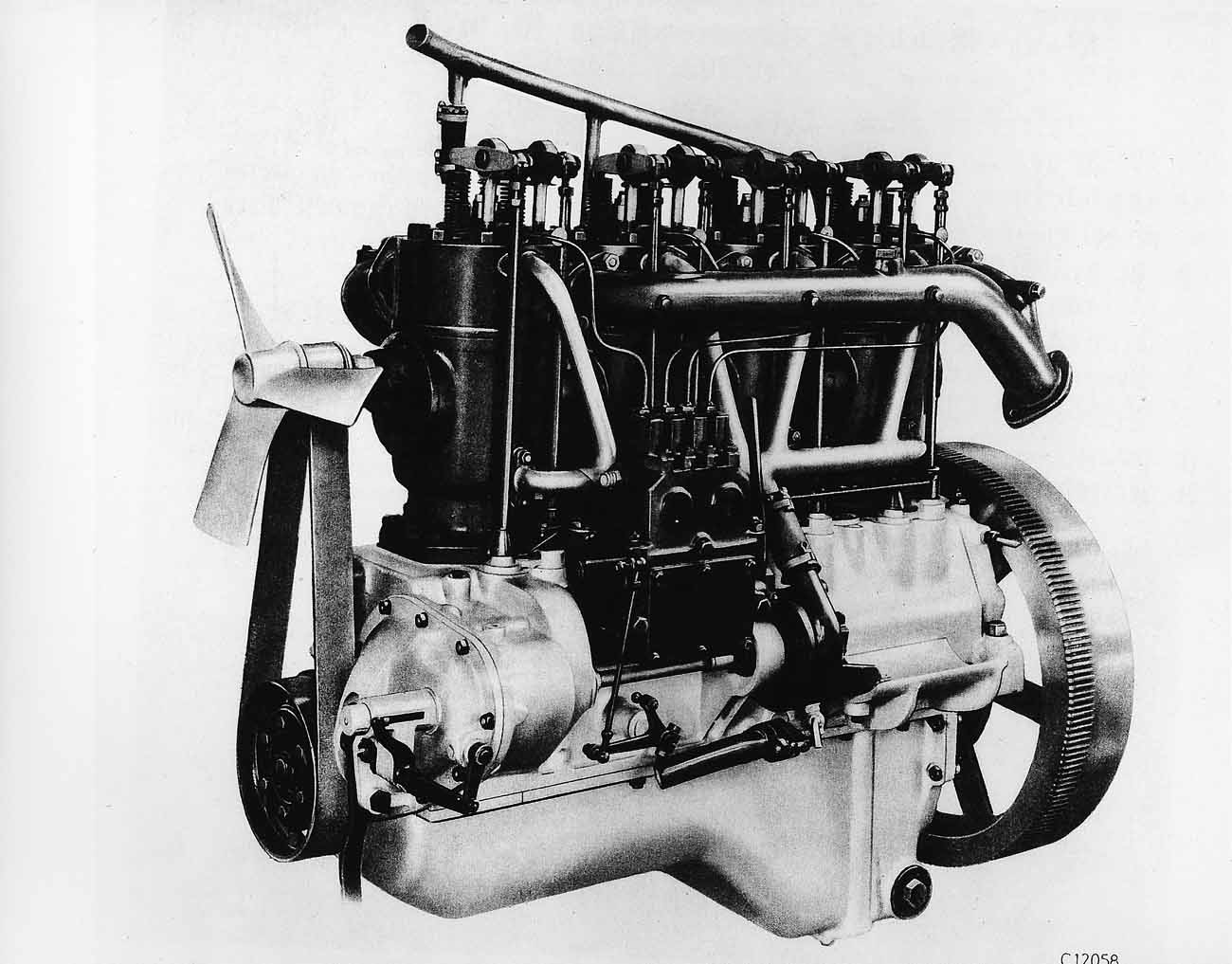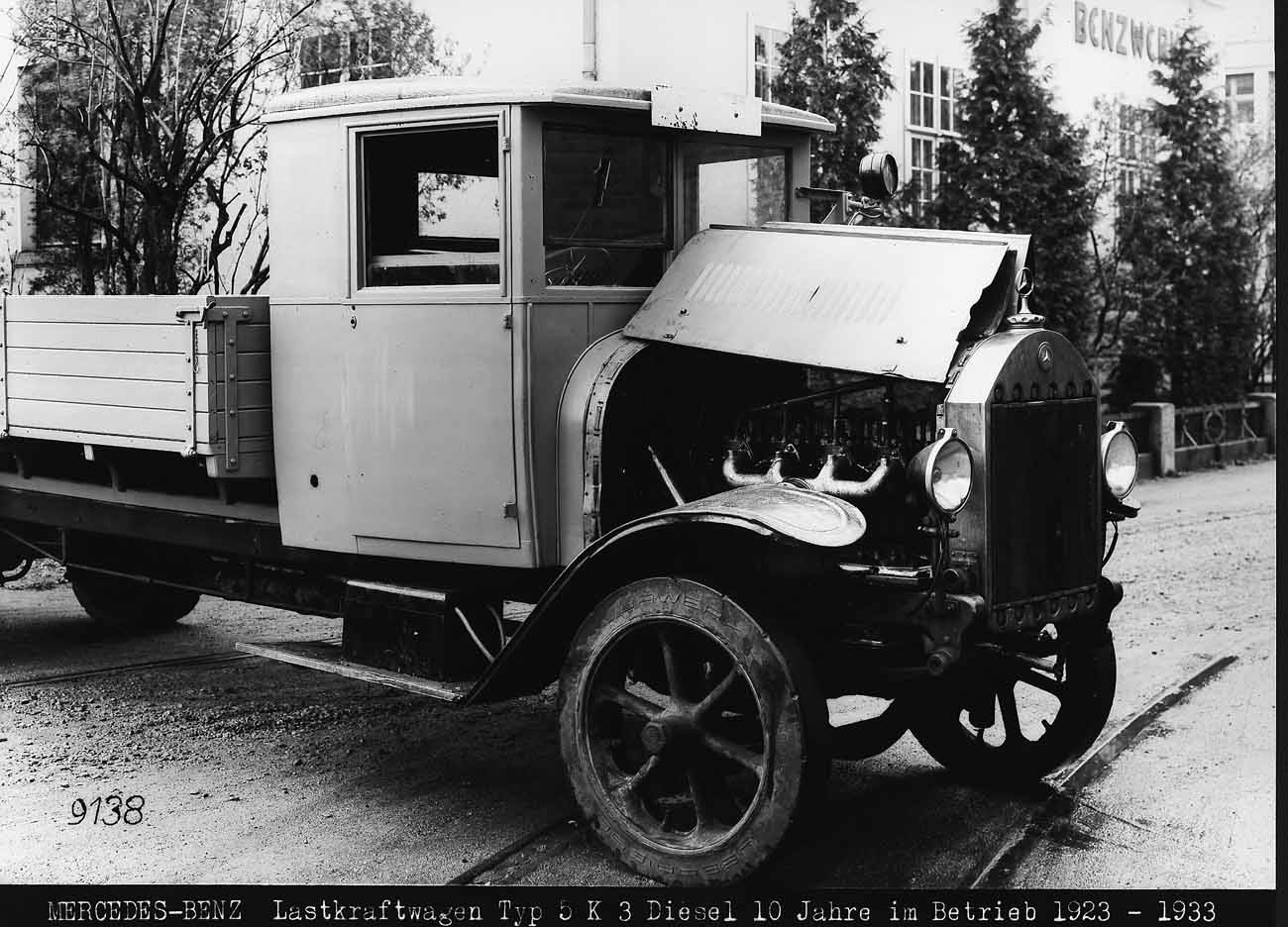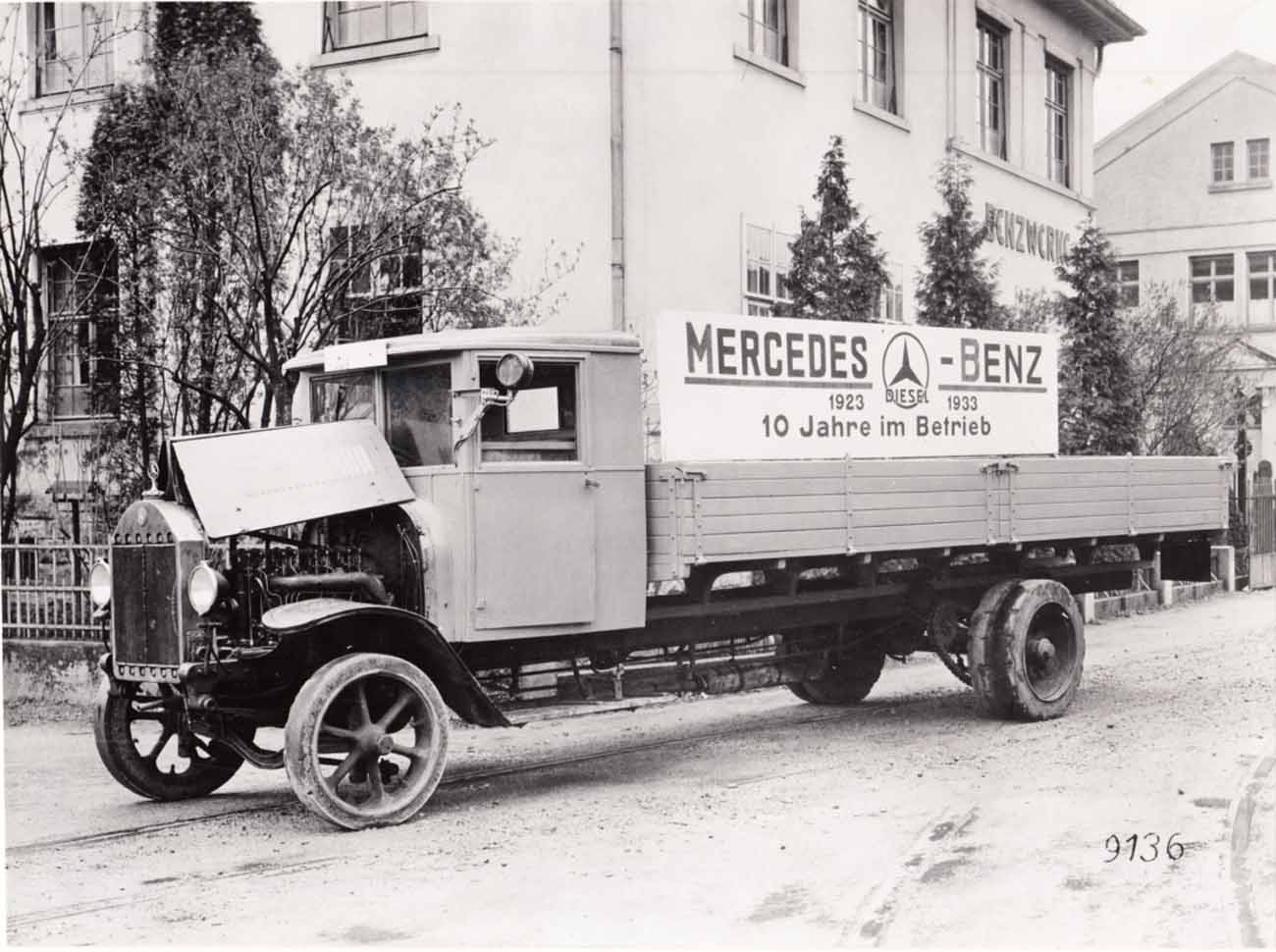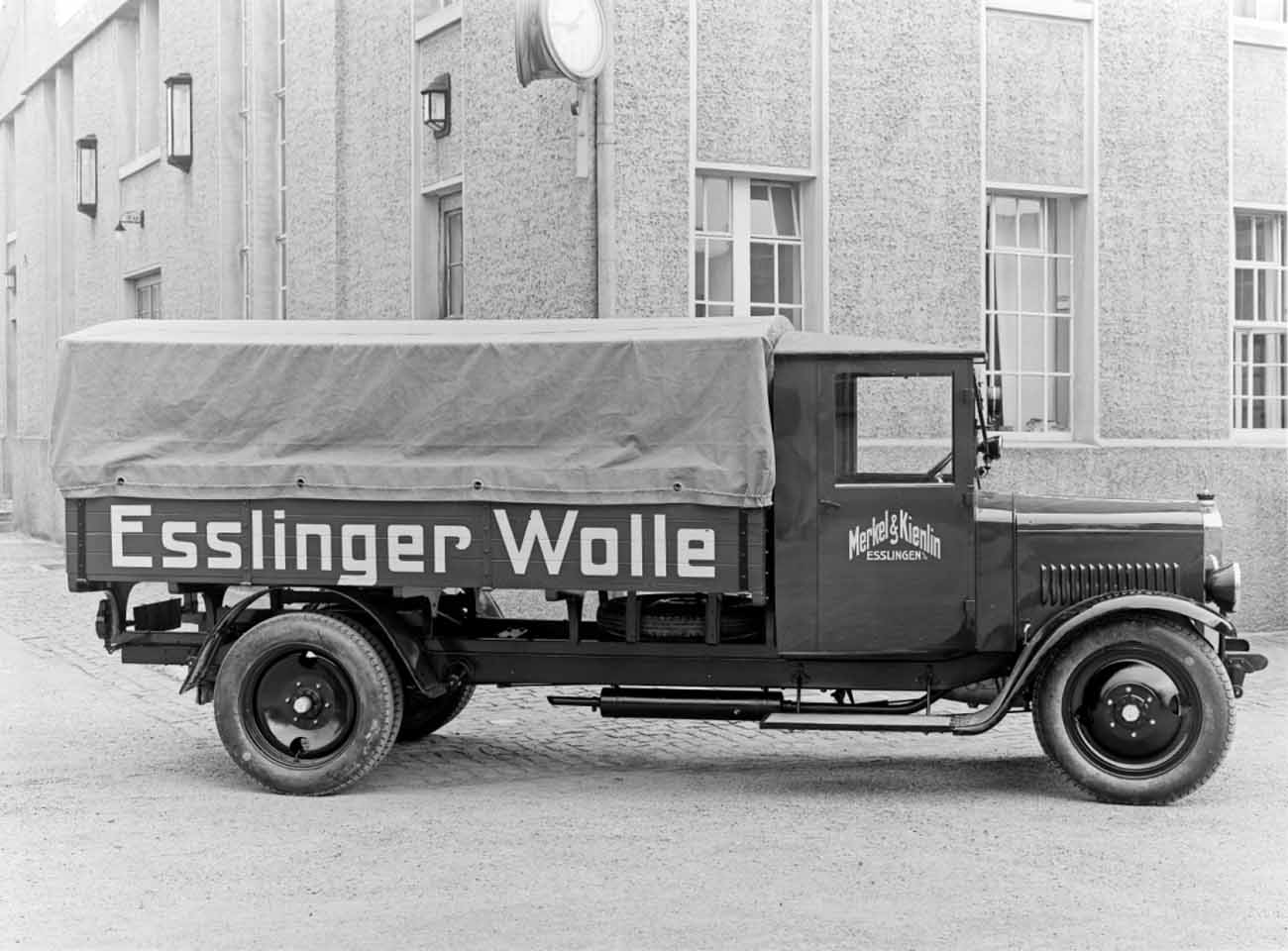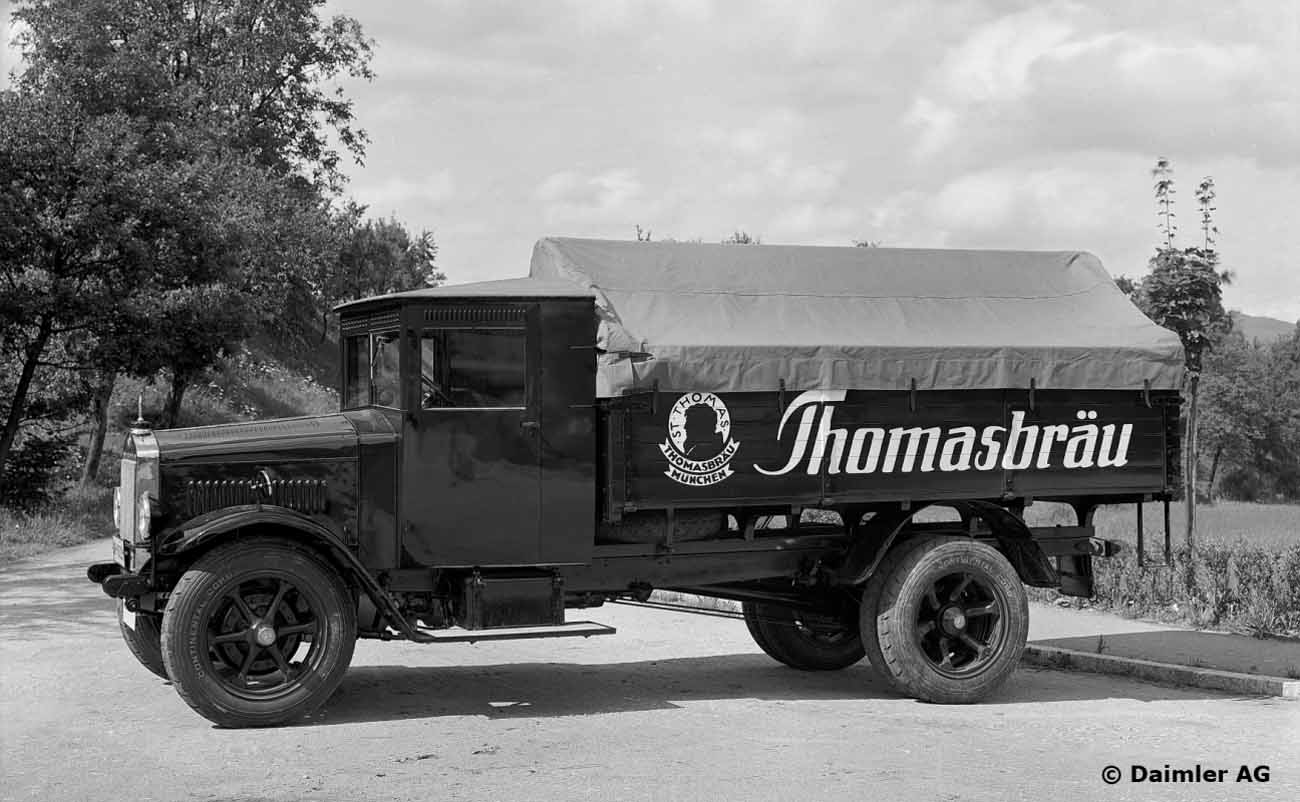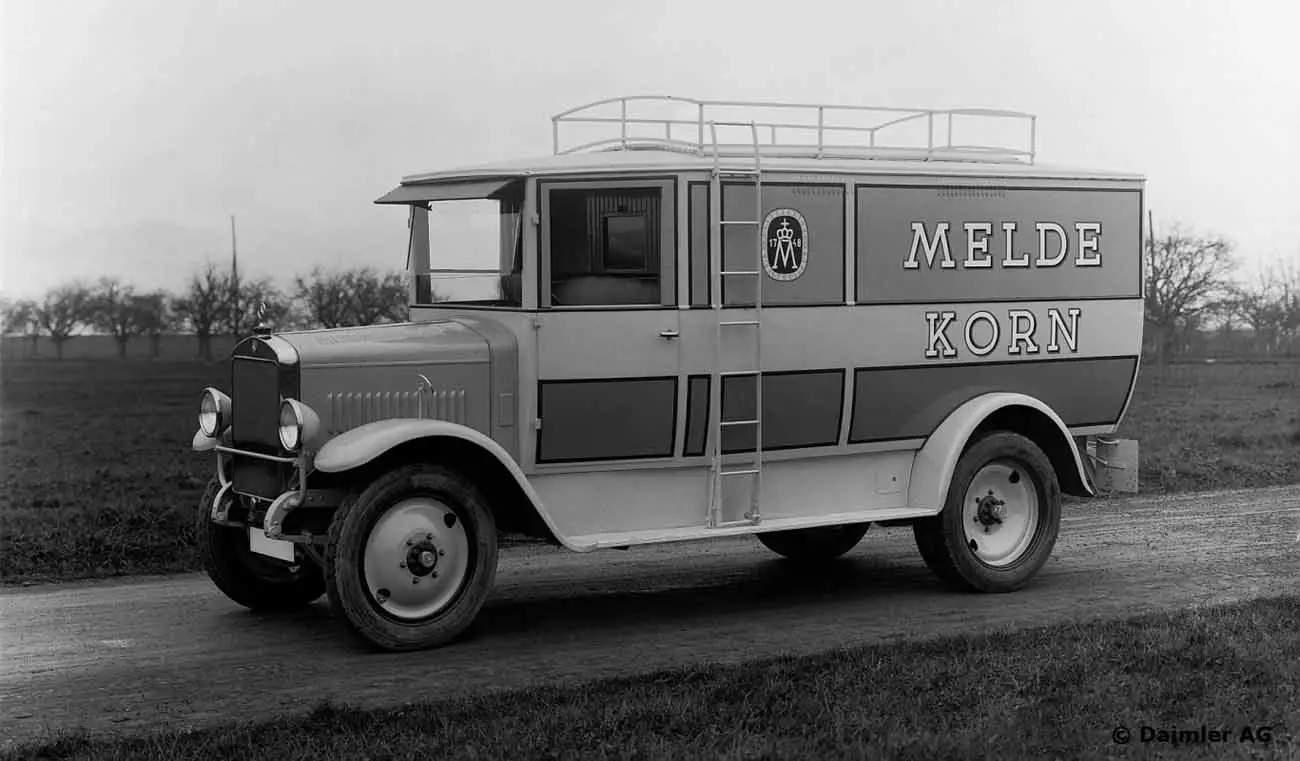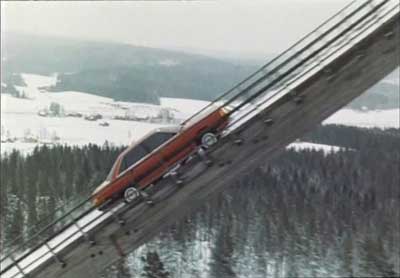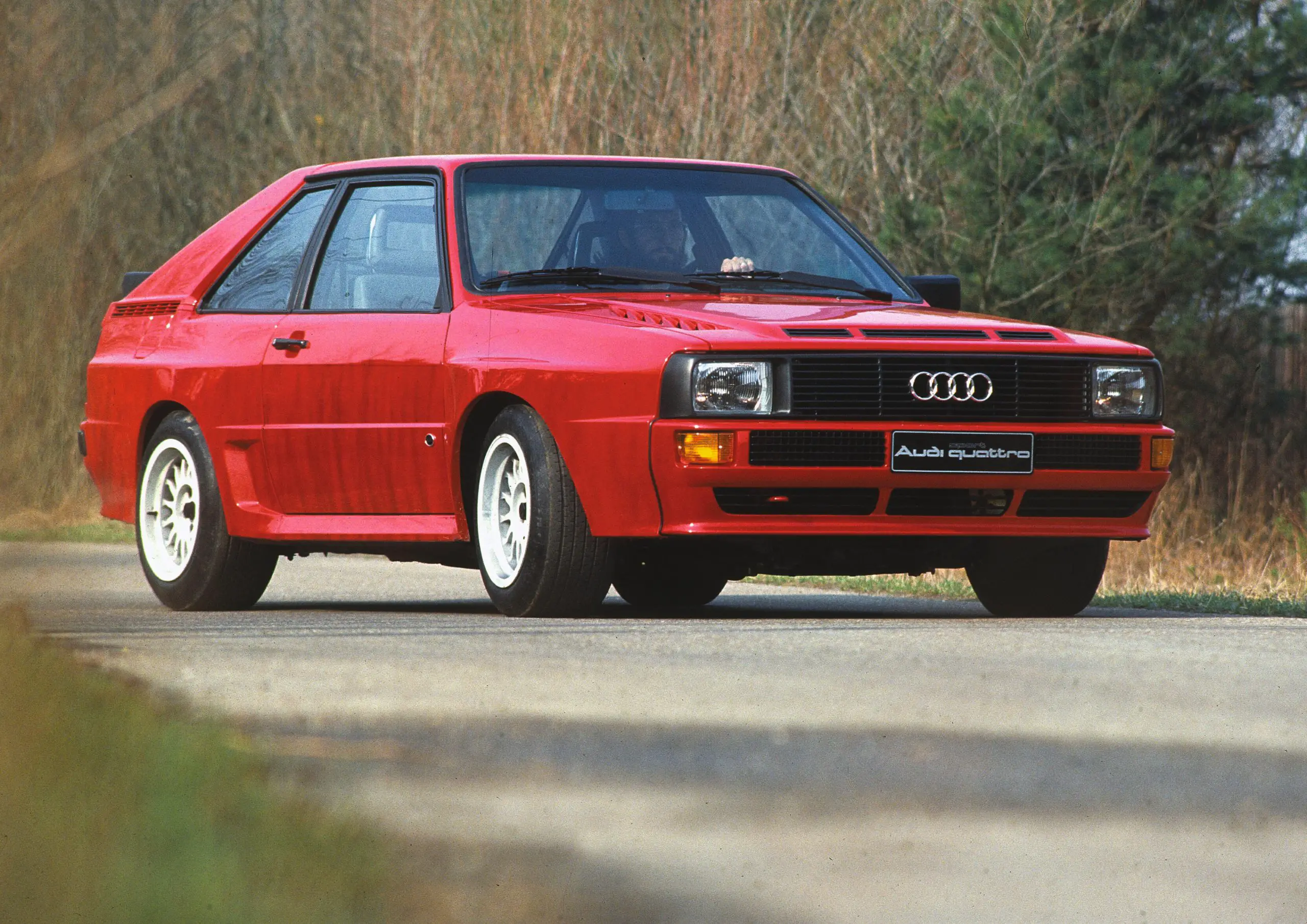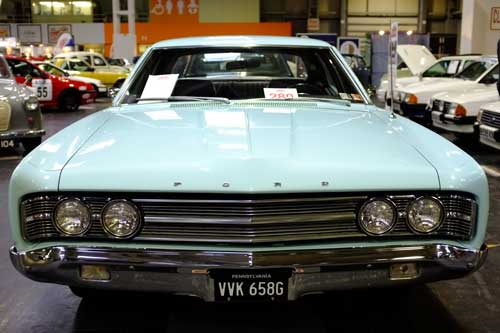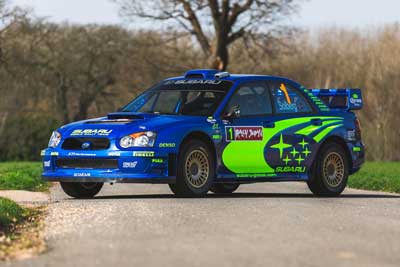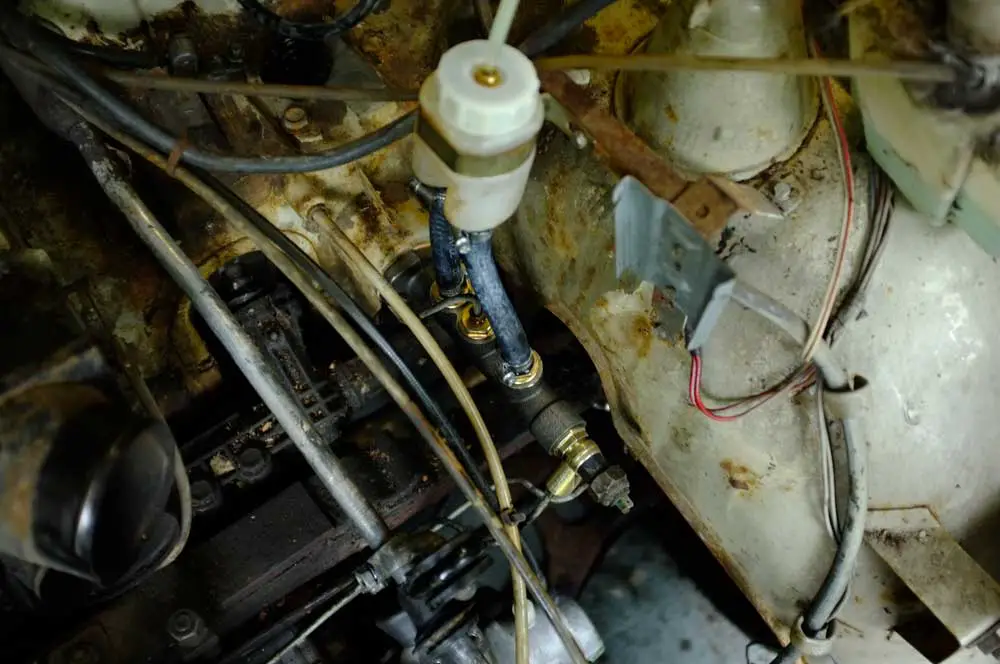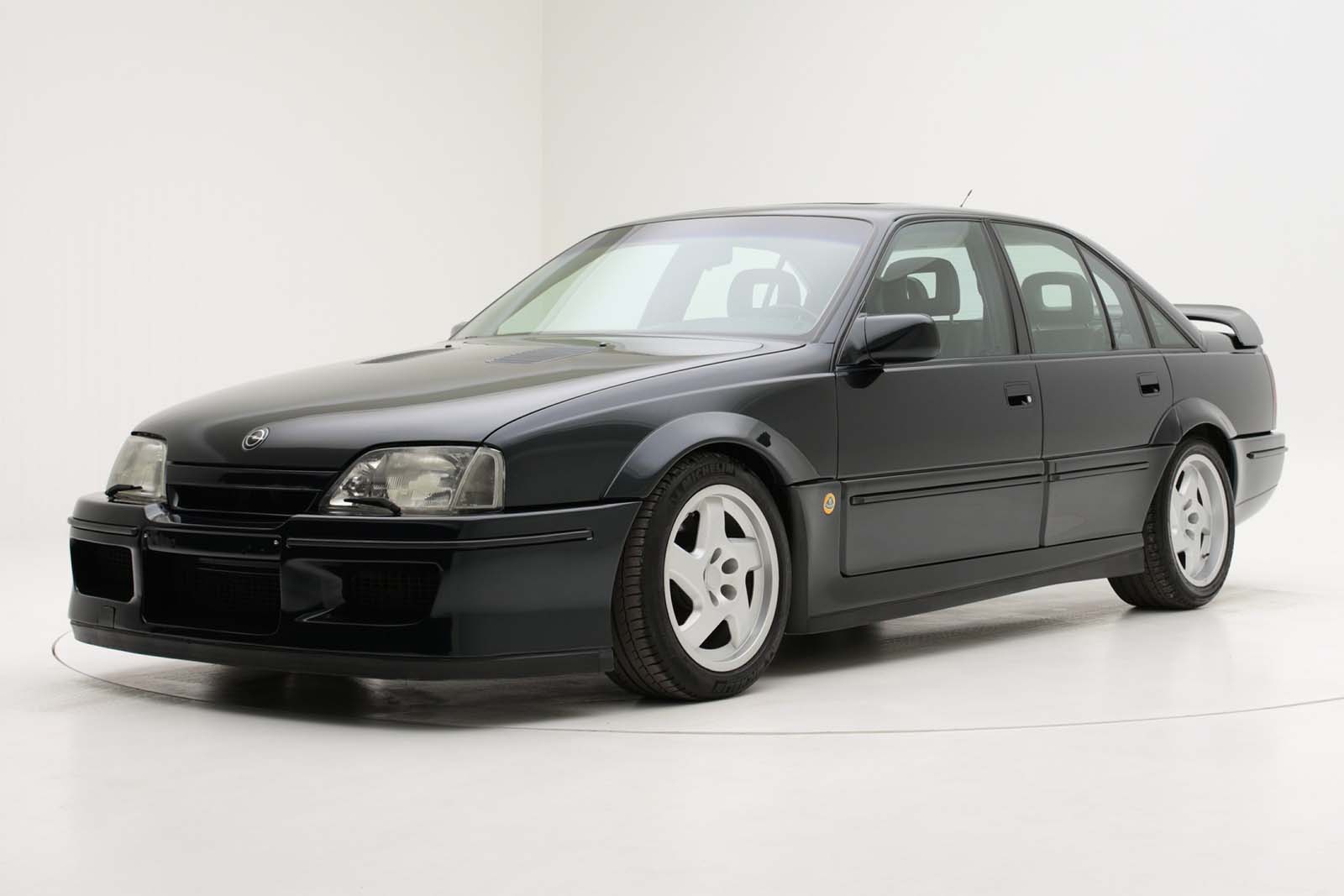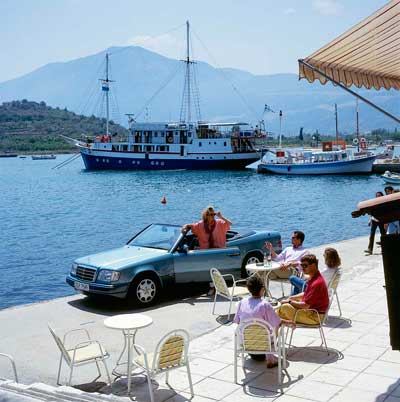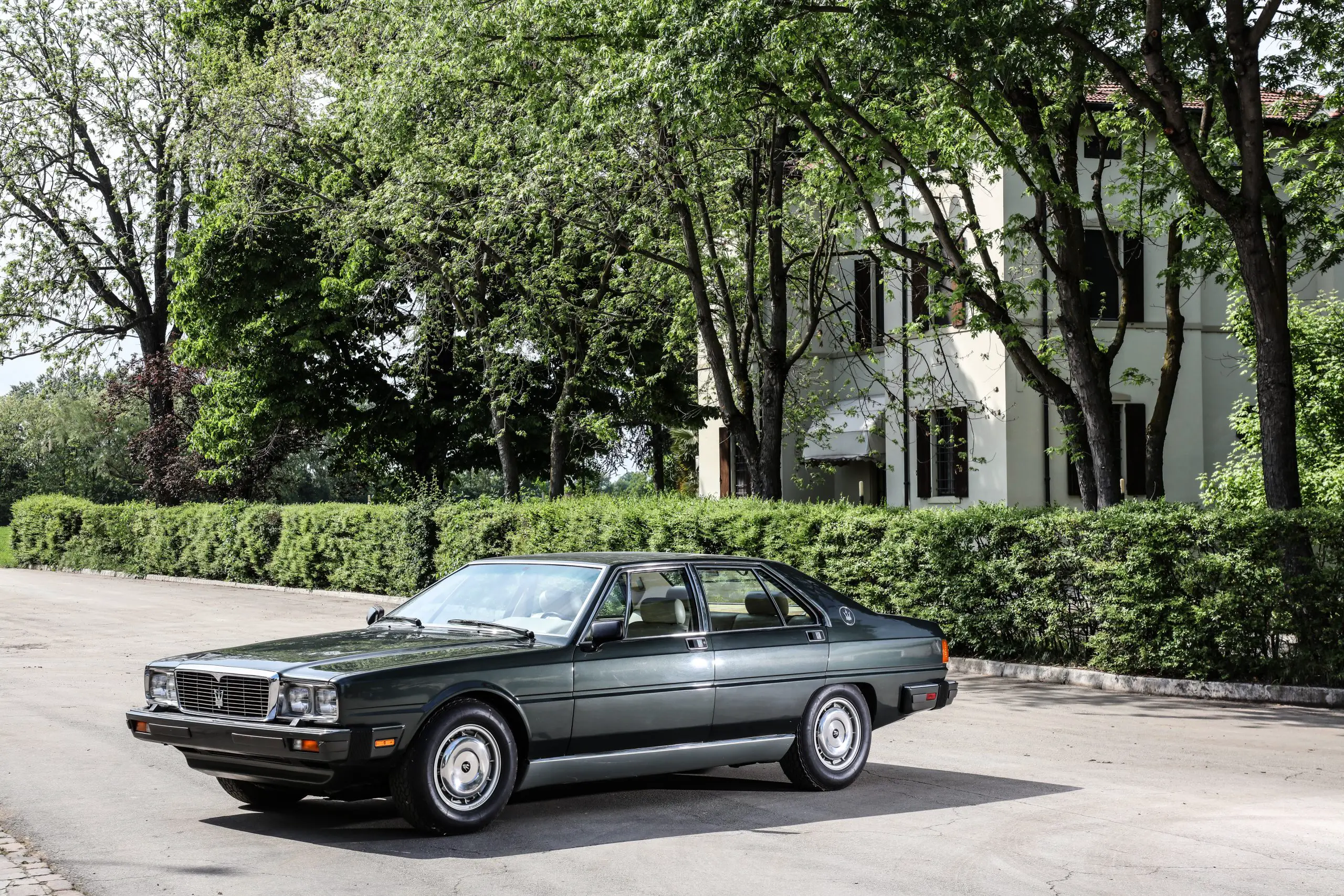
The First Diesel Trucks In The World Were From Benz And Daimler Back In 1923
It was back in 1923 that both Benz and Daimler produced diesel powered trucks. Benz & Cie got there first with diesel power, but Daimler followed with the first air injection diesel later the same year.
The first diesel Benz was a 5 tonne vehicle powered by a four cylinder OB 2 engine with a power output of 33 kW, 45 hp, at 1000 rpm. When compared to a petrol powered truck of the same design the efficiency was hugely impressive. Compared to the petrol engine version the diesel delivered fuel savings of 86 percent.
Work began in 1922 on the new truck and in September that year the first major assembly was put on a test stand. To start with they built 10 of the OB 2 engines.
Benz Diesel Truck first Test Drives - Northern Black Forest, September 1923
The first test drives of the new truck took place in the challenging, hilly area around Gaggenau in the Black Forest on the 10 September 1923.
The engineer’s report assessed the truck as follows.
“The favourable consumption is particularly impressive: supplied with brown coal tar oil, the OB 2 requires around 25 percent less than a petrol engine with the same power.”
The low fuel costs were largely due to the fact that tar oil was cheaper than petrol. Not only that the new engine could be “driven with gas oil, kerosene, Texas oil and yellow or brown paraffin oil” as Benz & Cie advertised the frugal engine in 1923.
Benz engineers selected the chassis from the 5 K 3 truck which was designed to carry a payload of five tonnes. During the test drives the OB 2 diesel proved itself to such an extent that on the 14 April 1923 Benz decided to put it into series production. The prechamber OB 2 was capable of producing 37 kW or 50 hp at 1000 rpm.
The Benz engineers chose the chassis on the Benz 5 K 3 truck which was designed for a payload of five tonnes. During the test drives, the OB 2 diesel engine proved itself to such an extent that on 14 April 1923 it was decided that the engine would go into series production. The prechamber OB 2 diesel engine was capable of an output of 37 kW (50 hp) at 1000 rpm.
Daimler Air-Injection Diesel Launched In October 1923
Daimler-Motoren-Gesellschaft started developing a diesel engine as early as 1911. While Benz & Cie were developing a truck, Daimler were building the air injected diesel engine to be fitted into a truck with a similar power output.
This engine produced 29 kW, or 40 hp, at 1000 rpm. Durability was proven during a series of test drives in 1923. A long distance drive between both DMG plants got an enormous amount of publicity.
Between the 20th and 30th of September 1923 a Daimler diesel truck drove from Berlin to Stuttgart and back. A large distance and back then considered spectacular.
The first Daimler 5C commercial diesel vehicles were produced in Marienfelde. The range consisted of a truck, a three sided tipper and a bus were all presented at the beginning of October 1923 at the Berlin automobile exhibition.
1927 - The Prechamber Diesel Engine Post Merger Of Daimler-Benz AG
Benz & Cie. and DMG merged in 1926 and only one of the two diesel engines was going to stay in production. The Benz prechamber design won and the air injection unit was dropped in 1927.
The first jointly designed prechamber engine was the 6 cylinder OM 5 which produced 55 kW, 75 hp, from its 8.6 litre displacement at 1300 rpm. OM is still the designation for all diesel engines produced by Mercedes-Benz today, OM standing for “oil engine”.
This was fitted to the Mercedes-Benz L 5 truck, it was also available with a petrol engine, the type M 36 with its 74 kW or 100 hp at 2000 rpm power output. The five tonne model was the only model to have the new diesel engine in the range in 1927. The smaller 1.5 and 3.5 tonne trucks were initially only available with a petrol engine. Customers were initially sceptical of the new diesel.
In 1928 the series production OM 5 received the new Bosch injection system. Robert Bosch had been developing a diesel injection pump since 1922. The new technology was presented in 1927 and helped people to accept the new type of engine. He was one of the first customers to order a diesel truck in 1924, an advance order obviously.
Generating Sales Of The New Mercedes-Benz Diesel Truck
Sales weren’t very strong when the new truck was launched with the diesel engine. Opponents criticised the loud and hash running engine, refined it wasn’t. But there was a positive reaction from England. In June 1928 a 5 tonne diesel was delivered to British Mercedes-Benz Ltd. “Commercial Motors” a magazine at the time spoke highly of the characteristics of the new truck over five consecutive issues. In the autumn of 1928, the Royal Automobile Club awarded Daimler-Benz AG the Dewar Trophy, which was awarded for special performance in motor vehicle performance.
To advertise the truck, which was still unknown in many parts of Germany, it went on a propaganda drive. Marketing in today’s language. Starting in Leipzig in the summer of 1929 the truck was taken all over Germany’s regions, from the North Sea to the Alps and from the Ruhr to the Lausitz region in the East.
During this time all salespeople in the dealerships and agencies were presented with the benefits of the new truck. Hauliers were lent vehicles and invited on test drives to get people behind the wheel. Local regional press was also involved to report on the new innovative driveline in detail.
Today you won’t find a big petrol powered truck, everything is diesel, for now. the impact this had on haulage of goods is significant and it approaching 100 years. What the next 100 years looks like who knows, but it’s not over for the diesel engine yet.
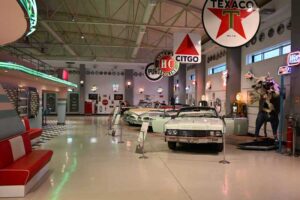
Ural Ataman Classic Car Museum – Istanbul, Turkey
This has to be one of the nicest private collections I have seen, the Ural Ataman Museum in Istanbul, turkey has not only a wide
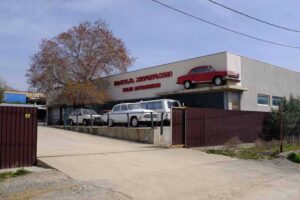
Tbilisi AutoMuseum Car Museum – Georgia
You may not have heard of this, but the small car museum in Tbilisi Georgia really has quite a lot to see. Buried in an
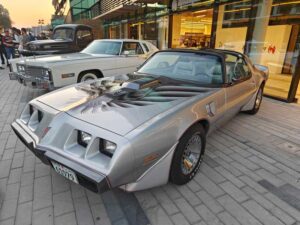
Bahrain Bike Week Classic Car Show December 2024
Bahrain Bike Week is the biggest event of its kind in the Middle East and the 2024 one was no exception. It’s not just the
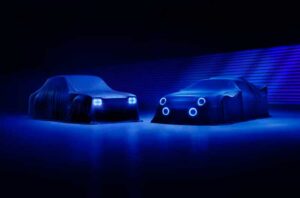
Ford Motor Company Bring Back Group 5 Mk1 Escort & Group B RS200 With The Help Of Boreham Motorworks
Ford have granted a licence to Boreham Motorworks, a division of the DVRN Automotive Group, to produce new versions of not just the Mk1 Escort
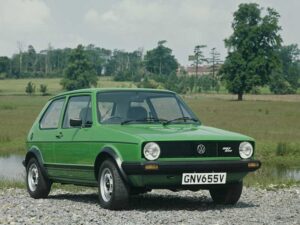
The VW Golf At 50 Years Old
Europe’s number 1 selling car the VW Golf has reached 50 years old this year, starting production on the 29th of March 1974. In
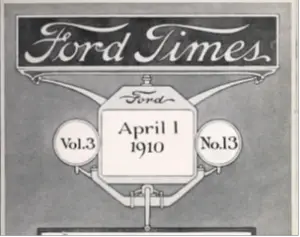
Ford’s Heritage Vault Makes The Ford Times Magazine Available To The Public
Ford’s expansion through the early 20th century was something to behold, the rapid growth of the company and the success of the Model T led

Ural Ataman Classic Car Museum – Istanbul, Turkey
This has to be one of the nicest private collections I have seen, the Ural Ataman Museum in Istanbul, turkey has not only a wide

Tbilisi AutoMuseum Car Museum – Georgia
You may not have heard of this, but the small car museum in Tbilisi Georgia really has quite a lot to see. Buried in an

Bahrain Bike Week Classic Car Show December 2024
Bahrain Bike Week is the biggest event of its kind in the Middle East and the 2024 one was no exception. It’s not just the

Ford Motor Company Bring Back Group 5 Mk1 Escort & Group B RS200 With The Help Of Boreham Motorworks
Ford have granted a licence to Boreham Motorworks, a division of the DVRN Automotive Group, to produce new versions of not just the Mk1 Escort

The VW Golf At 50 Years Old
Europe’s number 1 selling car the VW Golf has reached 50 years old this year, starting production on the 29th of March 1974. In

Ford’s Heritage Vault Makes The Ford Times Magazine Available To The Public
Ford’s expansion through the early 20th century was something to behold, the rapid growth of the company and the success of the Model T led
